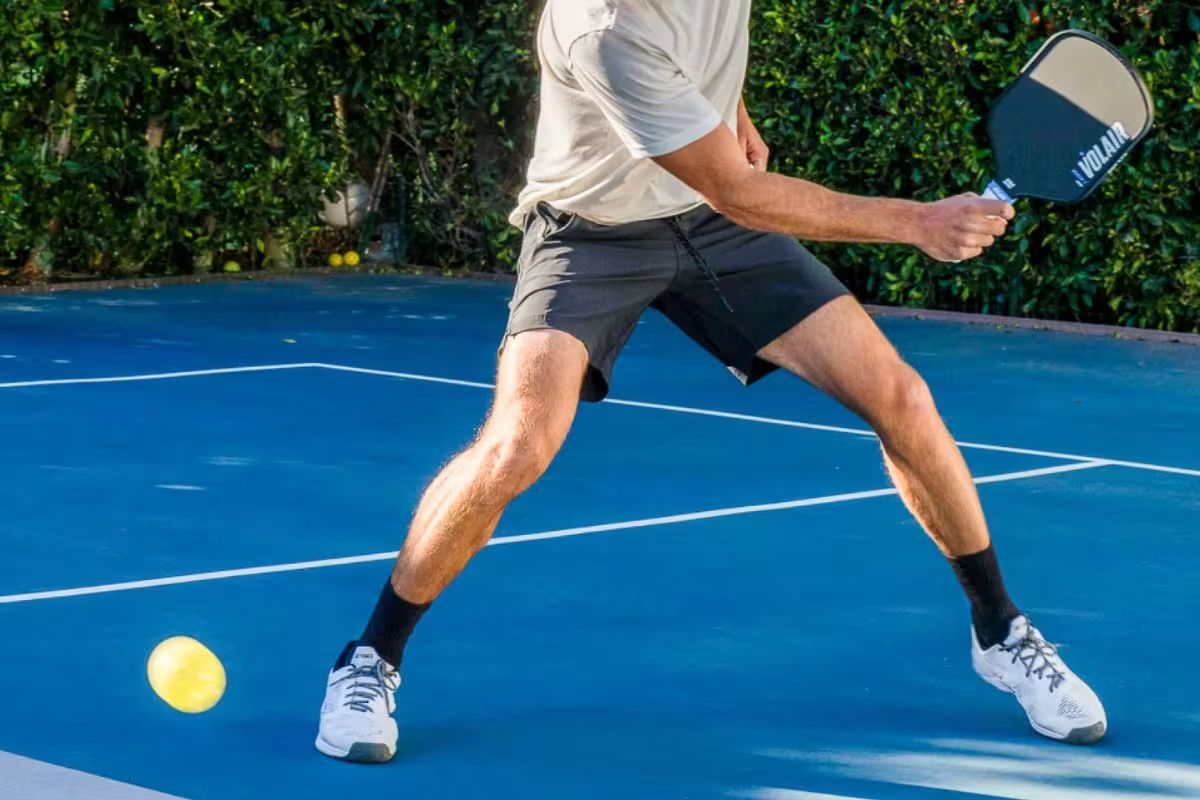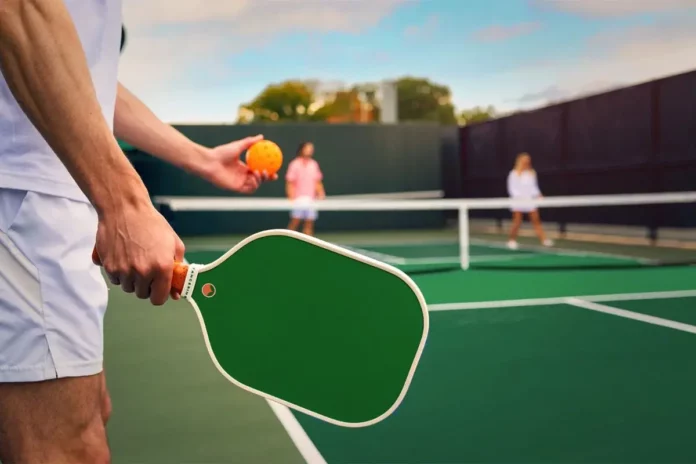Mistakes Holding Back Pickleball Beginners: At the 3.0 and 3.5 levels in pickleball, many players often find themselves feeling stuck, wondering why progress isn’t happening as quickly as expected. The truth is, that numerous small mistakes are typically holding them back. This pickleball guide identifies those common errors, explains their causes, and offers practical solutions to help players move forward.
1. The Struggle with Pickleball Serve and Return Consistency
Players often rush through their serves and returns, either trying to hit with excessive power or fearing mistakes. This usually leads to balls going out of bounds or into the net.
Newer 3.0 players or those who prioritize power over precision, lack the consistency needed to reliably place the ball.
Players should focus on consistency rather than power. A controlled, flat serve or return is far more reliable and keeps players in the point longer.
2. Overpowering the Pickleball Third Shot
Many players mistakenly believe that power is the key to winning, leading them to try for a big third-shot drive in an attempt to force an error. This often results in the ball sailing long or wide.
3.0-3.5 players who lack patience, mistakenly think power is the solution and often aim for a quick winner.
Instead of focusing on power, players should aim for controlled shots with precise placement. A controlled third shot, especially with topspin, is easier to keep in bounds and allows time to advance toward the net.
3. The Importance of Footwork in Pickleball
At this level, many players neglect their footwork, concentrating more on their shots than on getting into the proper position. This leads to reaching for shots instead of being ready in advance.
Players of all levels over-rely on their hands and neglect the importance of footwork, leading to poor positioning.
Players should focus on the split step to maintain balance and readiness. Good footwork ensures that every shot is properly set up, and without it, even a great swing will not be as effective.

4. Misjudging Timing on Speed-Ups
The desire to speed up the game often leads to misjudging the timing of shots. Players rush into a speed-up attempt, resulting in mis-hits or balls flying out of bounds. Aggressive players who want to take control of the rally, but who misjudge the right moment for a speed-up.
Patience is key. Instead of speeding up every ball, players should focus on controlled shots. When speeding up, aiming for an opponent’s dominant shoulder can make it more difficult for them to return the ball.
5. Attempting Advanced Pickleball Backhand Rolls Too Soon
Watching higher-level players execute flashy backhand rolls may encourage others to attempt these shots. However, these advanced shots require precise wrist control and should be learned with practice.
Intermediate players who try to mimic advanced shots without first mastering the fundamentals of backhand volleys.
Players should focus on mastering solid, reliable backhand volleys before attempting more advanced techniques like the backhand flick. Once they are confident in their basic skills, they can gradually incorporate the flick.
6. The Mistake of Aiming for the Line
Aiming for the perfect line shot is tempting, as it may seem like a way to dominate. However, it increases the risk of missing entirely and losing control of the point.
Overconfident players who believe that line shots will win points, often end up with missed shots and unnecessary errors.
Instead of focusing on the lines, players should aim for larger, safer areas of the court. Consistency rather than perfection will win more rallies.
7. Hitting Balls Going Out of Bounds
Players often take unnecessary swings at balls that are heading out of bounds because they lack the awareness to judge the ball’s trajectory. Players who haven’t yet developed the court awareness to recognize when a ball is likely to go out.
Players should practice reading the trajectory of the ball. If the ball is high and fast, it’s likely going out, and it’s better to let it pass rather than keep the opponent in the point.
8. Not Advancing to the Kitchen Line
After hitting a return, players hesitate to approach the kitchen line out of fear of being lobbed. This allows the opponent to take control of the game. Cautious players who stay near the baseline, missing opportunities to dominate the rally.
Players should make it a priority to move up to the kitchen line immediately after their return. This is the position that allows players to control the point and force mistakes from the opposition.
9. Overhitting Low Balls in Pickleball
Many players feel the need to attack every ball that comes their way, but hitting low balls with excessive force often leads to errors, either hitting the net or sending the ball out of bounds.
Players who feel the urge to smash any ball, even those below net height, often result in unforced errors.
Instead of attempting hard shots on low balls, players should focus on controlled dinks or reset shots. Keeping the ball in play allows the opponent to make the mistake, rather than giving away the point.
Small Adjustments in Pickleball, Big Progress
The road from 3.0/3.5 to higher levels can seem challenging, but improvement is often driven by small changes.
By focusing on these common mistakes and implementing the solutions, players can build confidence, improve their control, and progress to the next level. Every mistake made is an opportunity for learning and growth.
Bonus Pickleball Tips for Continued Success
- Dink Drills: A solid dink game sets the foundation for control. Spending extra time on dinks before each match pays off in the long run.
- Communication with Partners: Effective communication ensures better team coordination and fewer missed opportunities.
- Staying Positive: Everyone has off days, but focusing on the next point instead of dwelling on mistakes leads to faster improvement.
These minor adjustments will help players rise above the 3.0/3.5 plateau and sharpen their skills for the next level of play.

